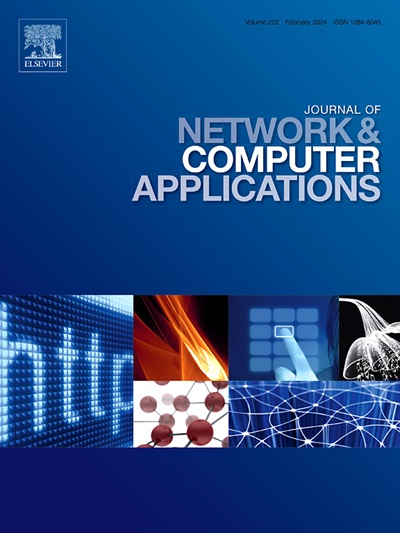Innovative detection of IoT cyber threats using a GBiTCN-Temformer and MKOA framework
IF 8
2区 计算机科学
Q1 COMPUTER SCIENCE, HARDWARE & ARCHITECTURE
引用次数: 0
Abstract
In the digital era, the Internet of Things (IoT) platform is progressively utilized in several applications due to its versatility, adaptability, and accessibility. Despite that, the lack of security protocols, improper device updates, and unauthorized access exposes the IoT environment to diverse cyber threats, which affect network security and user confidentiality. To enhance cybersecurity, various deep learning (DL) approaches have been developed, yet these techniques have struggled to detect various attacks affecting the IoT platform, often yielding imprecise results and high false positive rates. This research proposes a novel framework that leverages the Modified Kepler optimization algorithm (MKOA) based feature selection model and the Gated Bidirectional Temporal Convolutional Network (GBiTCN) based Temporal transformer (Temformer) detection model to improve the cybersecurity and integrity of the IoT devices. The MKOA technique is introduced to select optimal features from the normalized data, thereby analyzing the characteristics of attacks and reducing data dimensionality. In addition, this study introduces a hybrid detection model, which combines the Gated BiTCN and Temformer approaches. The Gated BiTCN captures the bidirectional semantic features of network traffic, while the Temformer extracts correlations among different sequences for precise cyber-attack detection. Further, the effectiveness of this proposed technique is measured by utilizing IoT attack datasets with distinct parameters and it attains a higher accuracy of 98.76 % during attack detection tasks. These results demonstrate that the proposed technique provides exceptional performance in cyber threat detection. Experimental validation shows that the model significantly contributes to cyber-attack detection and enhances the cybersecurity of IoT networks effectively.
利用 GBiTCN-Temformer 和 MKOA 框架创新性地检测物联网网络威胁
在数字时代,物联网(IoT)平台因其通用性、适应性和可访问性而逐渐被应用于多种应用中。尽管如此,缺乏安全协议,设备更新不当以及未经授权的访问使物联网环境暴露于各种网络威胁之下,从而影响网络安全和用户机密性。为了加强网络安全,人们开发了各种深度学习(DL)方法,但这些技术很难检测到影响物联网平台的各种攻击,通常会产生不精确的结果和高误报率。本研究提出了一种新的框架,利用基于改进开普勒优化算法(MKOA)的特征选择模型和基于门控双向时间卷积网络(GBiTCN)的时间变压器(Temformer)检测模型来提高物联网设备的网络安全和完整性。引入MKOA技术从归一化数据中选择最优特征,从而分析攻击特征,降低数据维数。此外,本研究还引入了一种混合检测模型,该模型结合了门控BiTCN和Temformer方法。BiTCN捕获网络流量的双向语义特征,而Temformer提取不同序列之间的相关性,以精确检测网络攻击。此外,通过使用具有不同参数的物联网攻击数据集来衡量该技术的有效性,并且在攻击检测任务中达到了98.76%的更高准确率。结果表明,该方法在网络威胁检测中具有优异的性能。实验验证表明,该模型对网络攻击检测有显著贡献,有效增强了物联网网络的安全性。
本文章由计算机程序翻译,如有差异,请以英文原文为准。
求助全文
约1分钟内获得全文
求助全文
来源期刊

Journal of Network and Computer Applications
工程技术-计算机:跨学科应用
CiteScore
21.50
自引率
3.40%
发文量
142
审稿时长
37 days
期刊介绍:
The Journal of Network and Computer Applications welcomes research contributions, surveys, and notes in all areas relating to computer networks and applications thereof. Sample topics include new design techniques, interesting or novel applications, components or standards; computer networks with tools such as WWW; emerging standards for internet protocols; Wireless networks; Mobile Computing; emerging computing models such as cloud computing, grid computing; applications of networked systems for remote collaboration and telemedicine, etc. The journal is abstracted and indexed in Scopus, Engineering Index, Web of Science, Science Citation Index Expanded and INSPEC.
 求助内容:
求助内容: 应助结果提醒方式:
应助结果提醒方式:


